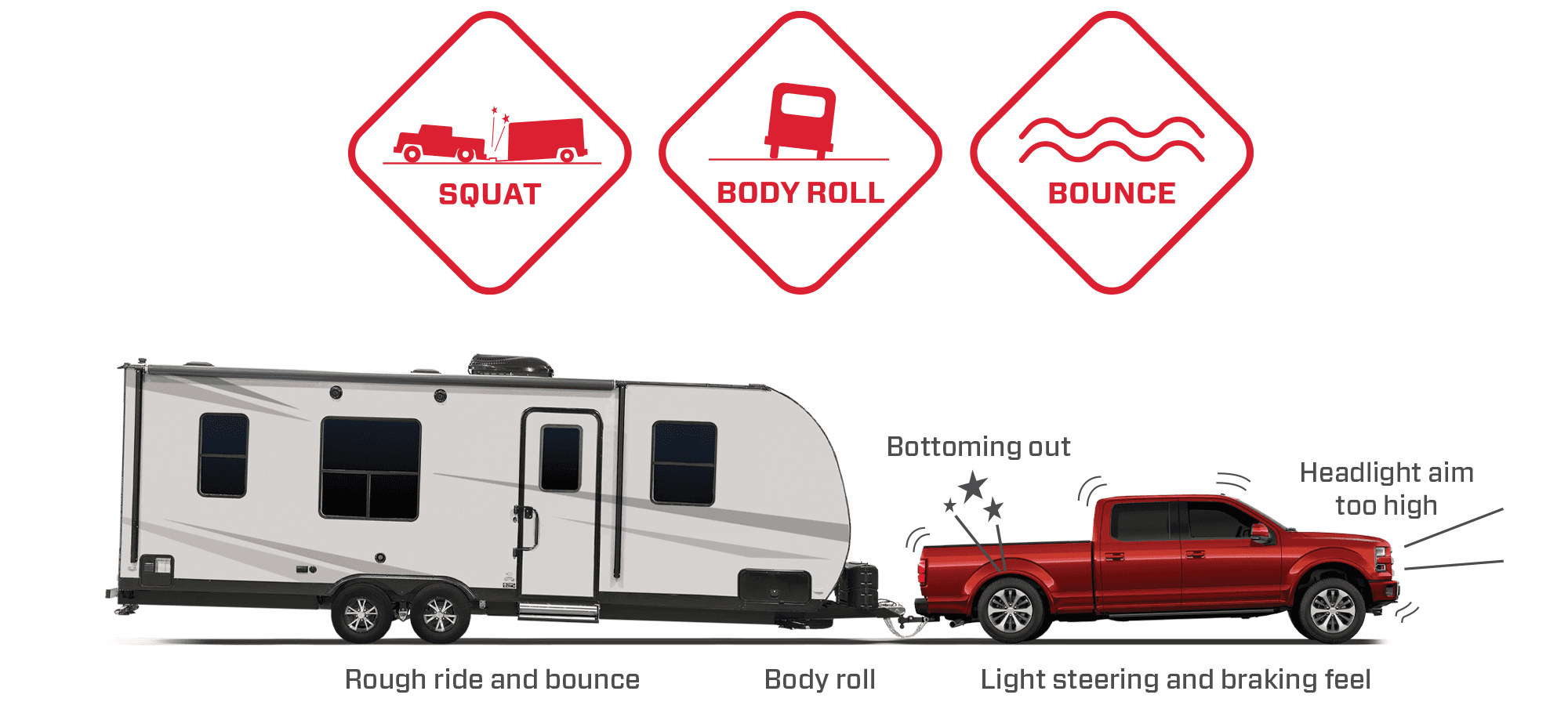
What does a sway bar do?
10/21/2022
A sway bar slows the trailer’s action as you drive, preventing it from swaying back and forth. Trailer sway bars or sway controllers are metal or steel bars that attach from the hitch on your tow vehicle to the tongue of the trailer for towing. They are designed to keep the trailer from swaying as you drive down the road.
While a sway bar might not improve ride quality, combined with an air spring kit it can increase the driver’s comfort, making it easier to steer and control.
What is trailer sway?
Anyone who has hauled a trailer more than once knows the feeling of trailer sway from a giant gust of wind or a bumpy road. Beyond outside forces, trailer sway is often due to unbalanced weight distribution, causing excessive trailer or camper tongue weight. This can cause the rear bumper of your vehicle to squat, leading to sway.
Trailer sway can leave drivers feeling stressed, fatigued and like they’re not under control of their vehicle. Nothing can be scarier for those towing and hauling than speeding down the highway and feeling like you’re losing control with a trailer swaying back and forth.
How does trailer sway happen?
The added weight of the trailer and a squatting bumper can cause a loss of traction, bringing a loss of steering control and an out-of-control haul. Trailer sway can cause issues like crashing your vehicle and going off the road.

Still, if you do start to sway, don’t panic. Let off the gas and reduce your speed. You should slow down and maintain at least 10 miles per hour below the speed you noticed the swaying begin. Don’t apply your brakes or speed up. Hold your steering wheel straight and steady. Don’t count-steer, which could make it harder to gain control.
Preventing trailer sway with proper loading.
Drivers should be mindful to load their trailers properly. Before towing a trailer, make sure all top-heavy items are loaded first, with heavier cargo in the front of the trailer, ahead of the axle. About 60% of your load’s weight should be in the front half of the trailer, forward of the front axle, with the load’s weight evenly distributed side to side. Be sure the loaded trailer and tow vehicle never exceed the gross vehicle weight rating or the gross axle weight rating set by the manufacturer.
The gross vehicle weight rating is the amount of weight a vehicle’s components like brakes, transmission, differentials, axles and tires, are designed to handle. These limits are found on the vehicle’s Safety Compliance Certification Label.

The Solution to Sway
Beyond an air spring kit, a trailer sway bar or controller is a great option to keep your haul from swaying off the road. Still, a sway bar does not provide load support like Air Lift air spring kits.
While an Air Lift air suspension kit can solve all the problems associated with towing and hauling, other solutions can work together with the air suspension kit for the safest ride possible.
By using a trailer sway bar alongside an Air Lift spring kit, customers can use Air Lift to level their load, lightening the weight on the trailer hitch and sway bars simultaneously to have more control preventing trailer sway while driving. Those with extra-large hauls or trailers should consider a sway bar along with an Air Lift air spring kit.

